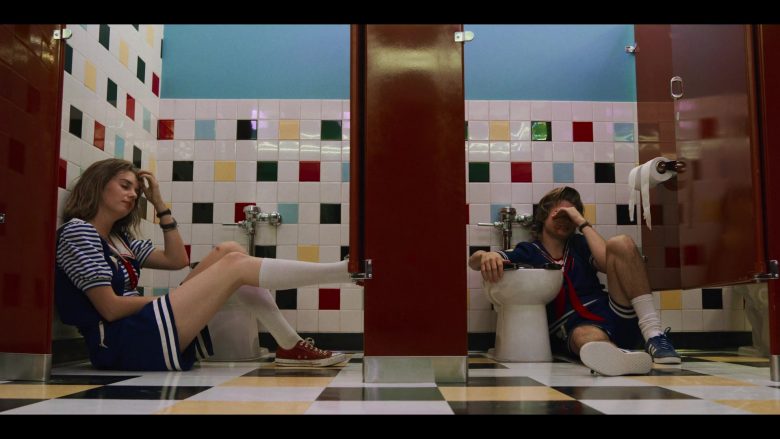As you watch Stranger Things, it’s not hard to spot the heavy inspiration taken from Stephen King, Steven Speilberg, David Lynch, or Dungeons & Dragons (okay, that one is really obvious…), but the Duffer Brothers don’t shy away from trying new things and breathing new life into media of the past by making it their own, separating itself from just becoming a phony knock-off or remake.
As previously mentioned, Stranger Things can’t be pinned down to one genre, it’s a science fiction, horror, romance, and buddy comedy all in one. It draws viewers in with the familiar engagement that fans of these genres have come to know, such as psychic powers, monsters, or quirky adventures, without blatantly copying any of its inspirations. One example of this is a scene that nearly parallels E.T. Nearly.
Both E.T. and Stranger Things revolve around children helping someone, or something, unlike themselves escape a corrupt government, with a scene in the second to last episode of season one referencing the former when all the kids are riding their bikes with government workers chasing after them. A writer on Narrative First describes it, “The scene bears a striking resemblance to the climactic scene in E.T., one so strong that a prediction as to the eventual outcome of that scene seems inevitable: 11 will lift the boys and their bikes into the air (Anon. “Stranger Things).”
Except in a twist, Eleven stops to fight back against her abusers, knowing that there is no escape or out running this situation like there was for E.T. As the aforementioned article puts it, Stranger Things gives this iconic scene its own interpretation through the dynamic opposite of pursuit vs. avoidance. This change can be considered a form of engagement, as it pulls the viewer in using a well-known narrative while also working against the viewers expectations, making them anxious if Eleven will be successful or not in her pursuit of freedom.
Leading away from the supernatural genres, let’s focus on the, often B-plot, genre of romance plotlines. Specifically, the one between Robin Buckley and Steve Harrington. Throughout the entirety of season three, even from the first scene where we’re introduced to Robin, the plot relies heavily on common romance tropes including enemies to lovers. Robin teases Steve for how he’s lost his cool factor and easy ability to pick up girls, even going as far as keeping a score board of all the times he gets rejected. Seeing the way Robin, the outcast, and Steve, the former ‘King’ of high school, teasingly interact throughout a majority of the season misleads the viewers into assuming that they’ll be the endgame. Within the first half of the season, Robin even makes an offhanded comment about how she sat behind Steve in class and would always stare at him, without elaborating further.
After being beaten up and drugged with truth serum by Russians, the two hide in the movie theater bathroom before Steve begins to confess that spending the summer working with Robin at the mall’s ice cream joint has been the most fun he’s had, how he’s fallen for her, and that she’s made him laugh harder than anyone else has. With a solemn expression, Robin finally confesses: she wasn’t staring Steve down because she liked him, she was envious of him. It’s revealed that the real object of her affection was a mutual classmate, Tammy Thompson, who only had eyes for Steve.
This scene is overall a very thoughtfully, well executed conclusion to a season long dupe. By using tropes that have become synonymous with inevitable romance, enemies-to-lovers or the outcast and the popular one, combined with the close and personal scenarios that these two are often found in, like being tied to one another, it’s not unusual for viewers to assume that they’ll be paired together – that’s exactly what the Duffer brothers wanted you to think. A redditor words it best, writing, “The scene that results from all of these assumptions is one of the best in the series. The Duffers evolved the narrative. We expect this to be the moment that finally seals their ‘romance’, with Steve finally confessing his feelings. But we don’t expect for Robin to have a confession of her own (Ok-Secretary “Straight-Baiting the Audience).”
Contextually speaking, it’s a moment that goes against the status quo of heteronormativity and reminds audiences that it’s not progressive to still be making these assumptions that every male and female that are close will evolve to have a romantic relationship.
In conclusion, the Duffer brothers have a knack for creating narratives that blend familiarity with originality by leading a well-known theme into its own direction, making Stranger Things just as memorable, thoughtfully crafted, and full of heart as the media it draws inspiration from.



